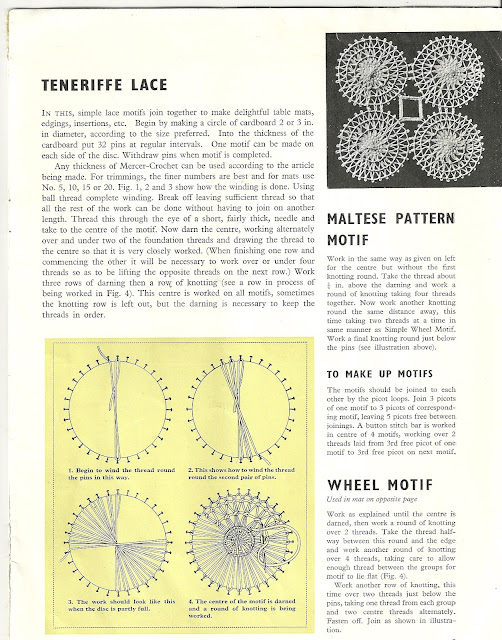One class of textiles which exemplifies beauty and skill is
lace. Lace has a long history from the
earliest forms of netting to the modern machine techniques which produce
gossamer webs of threads. Experts
classify lace as either needle lace or bobbin lace but there are other textiles
we consider as lace: knitted lace, Irish crochet lace, tatted lace
edgings. There are dozens and dozens of
variations of lace, each with their unique characteristics. This can be a bit confusing.
The lace for today is known by several names: Tenerrife,
spider, punta de Espana, and sol among others.
This lace is a Spanish handcraft from the 17th C for
household use and was professionally produced in a 19thC revival.
When used for ecclesiastical garments it was frequently embroidered with gold
threads. A form was also produced in
Paraguay using silk threads.
In its simplest form these needle-woven circular patterns
are formed by foundation threads that radiate from the center like a wheel with
additional darning threads woven in different patterns around the circle. These circles or spider webs are then joined
together.
A pattern booklet issued by J. and P. Coats in Great Britain
(date unknown) instructs making a circle out of cardboard and placing 32 pins
at regular intervals around the circumference.
Thread is woven through the circle around the pins. Additional threads are darned and knotted
around the center of the web and the pattern radiates outward.
This kit for a “Polka Spider Web” was a product of the K
& K Co., Chicago, Illinois, 1938 and included wooden forms (2 large and 2
small) onto which the thread is woven.
Note that there is also a pattern for making a square form (you can see
this more clearly on the small forms).
Because pattern booklets and kits were very popular, many of
these handcrafted items
can still be found in antique and thrift shops.





No comments:
Post a Comment